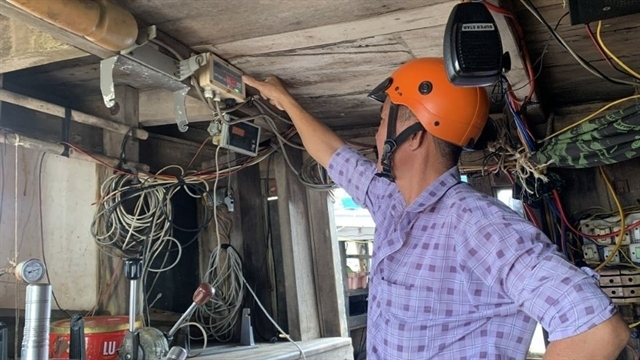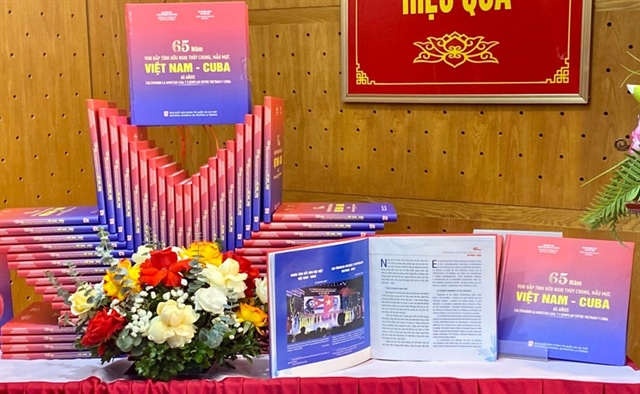 Environment
Environment

The Government has urged Central Highlands’ authorities to take serious measures to cope with the severe drought, which could lead to a shortage of food and affect people’s health.
 |
| A lake is exhausted in the Central Highland region. The Government has urged Central Highlands’ authorities to take serious measures to cope with the severe drought, which could lead to a shortage of food and affect people’s health. — Photo cafef.vn |
HCM CITY (VNS) — The Government has urged Central Highlands’ authorities to take serious measures to cope with the severe drought, which could lead to a shortage of food and affect people’s health.
Deputy PM Nguyễn Xuân Phúc said during a visit to the region last Thursday that solutions should be implemented as soon as possible.
Hoàng Văn Thắng, Deputy Minister of Agriculture and Rural Development, said the water level in many of the artificial lakes and hydropower reservoirs in the region was much lower than last year.
The dry season in the Central Highlands will continue until the end of April, he added.
The water supply is expected to fail to meet demand for 100,000 hectares of coffee plantations, Thắng said, adding that 25,000 households in Đắk Lắk Province alone would not have enough water throughout the dry season.
Some 28,300 families in the region lack household water. The number is expected to surge to 59,000 households.
Trần Hồng Hà, deputy minister of Agriculture and Rural Development, said the region has many large rivers, many of which did not flood in the rainy season last year.
The Deputy PM said that hydropower stations in the provinces should discharge water at a maximum level to meet people’s demands.
Phúc urged the localities to examine water reservoirs and build plans for water usage, prioritising local daily activities, care for animals, and highly profitable crops.
Phúc said it was important to identify areas that are prone to water deficiency and prepare appropriate plans for growing drought-resistant crops, while speeding up the construction of irrigation facilities.
Phúc asked ministries and sectors to save water at reservoirs to provide sufficient water for drought-hit areas during the dry season, stressing the need for supplementary policies to support people in affected regions.
The region also needs to focus on afforestation, especially in the upper reaches of rivers and other important areas, to cope with natural disasters in the long-term, he said.
During the trip, Phúc visited Chư Don Commune in Chư Pưh District where a number of hectares of rice fields have been destroyed by drought and H Bông Commune, one of the localities in Chư Sê District suffering the worst from water shortage.
He suggested local farmers and authorities consider cultivating other crops that are much more resistant to drought.
Phúc has agreed to allocate 2,000 tonnes of rice to people, especially ethnic minority groups, in the four Central Highlands provinces of Gia Lai, Đắk Lắk, Đắk Nông and Kon Tum, which have been hit hard by the drought.
Phúc has also asked commercial banks to extend or delay loan payment for people in the region.
Statistics show that up to 95,000 hectares of trees in the Central Highlands region are facing water shortages.
Water levels at most local irrigation facilities have shrunk by more than half.
According to the regional Meteorological and Hydrological Station, nearly 170,000 hectares of plants will be affected by drought if the heat wave lasts until June.
In Gia Lai Province alone, drought has caused a lack of food to nearly 15,000 households, forced 7,000 others to face water shortages, and affected 13,500 hectares of trees.
With the Mekong Delta suffering from severe drought and saline intrusion, the Ministry of Natural Resource and Environment has provided a hydrographic map to all provinces there indicating the distribution of freshwater below ground.
It has called on local authorities to drill wells to extract water based on the map.
The ministry also instructed the Department of Water Resources Management and National Water Resource Survey and Master Planning Centre to help with experts and equipment.
It exhorted all related authorities to closely monitor El Nino, the weather, saline intrusion and river flows and advise local authorities in a timely manner.
At the same time it is closely watching water flows from Chinese dams on the Mekong so that it can make plans to use the water efficiently.
The ministry has provided VNĐ500 million (US$23,000) each to Vĩnh Long, Trà Vinh, Bến Tre, Kiên Giang, Long An, Tiền Giang, Sóc Trăng and Cà Mau provinces to mitigate the impact of the drought on local residents.—- VNS




